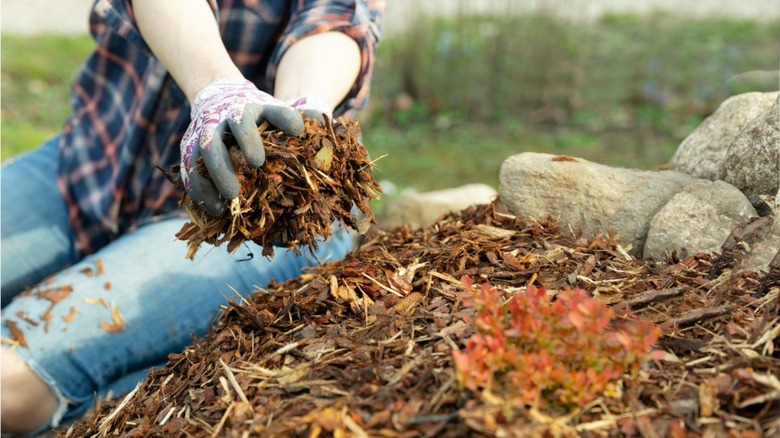The Best Way To Care For Snapdragons In The Winter
Snapdragon varieties are deer-resistant summer flowers that will fill your garden with sweet fragrance, though they'll need a bit more care to survive the winter. These short-lived perennials are often grown as annuals, but they can last until next year with a bit of attention and protection. Depending on where you live, winter care for snapdragons will vary. For those in USDA hardiness zones 7 and higher, you'll be able to keep your snapdragons outdoors; however, they may need some cover to protect the roots from colder temperatures. This can also be the case in zone 6, but it's important to pay attention to your local temperatures. Additionally, don't be alarmed if the snapdragons in your garden die back in winter, as it's typical for them to enter dormancy when it's cooler.
These flowers tend to start struggling once temperatures drop below the 40s (Fahrenheit), so those who live in regions with bitter winters will need to take their snapdragons inside to keep them alive through the season. Because they prefer temperatures between 50 and 75 degrees Fahrenheit, snapdragons are plants that need to be overwintered before temperatures start dropping. If you live in a colder area and don't want to bring your snapdragon indoors, you might consider collecting some of your plant's seeds and growing them next year.
Overwintering snapdragons
In warmer areas, leave your snapdragon in your garden to go through dormancy. Once the plant dies back a bit, prune the dead stems. Now, you can use mulch to cover the ground around your snapdragon and insulate its roots. Create a layer that's about 3 inches thick with straw, leaf mulch, grass clippings, or shredded bark. In the spring, you can start removing the mulch to help your plant produce new growth. For those in colder climates, taking care of snapdragon flowers will be more difficult in the winter. While mulch may be able to help, it's best to relocate your plants inside to ensure they survive the harsh season. Carefully dig up your snapdragon, leaving enough space that you don't harm the roots with your shovel.
Once placed into a pot, set your snapdragon in a cool area, such as a basement or garage, where it will receive indirect sunlight. Your plants should be moved before the first frost of the season. When the plant goes dormant, prune it as you would with outdoor snapdragons. Throughout winter, only water your plant when the soil starts to dry out, as it'll need less moisture in dormancy. In early spring, place the pot outside for a little bit, increasing the time every day. This will help your snapdragon to adjust to the outdoors again, and in about a week, your snapdragon can remain outside. By providing some extra care, you can make your snapdragons last more than one year.

